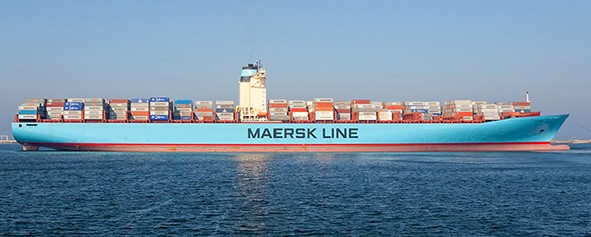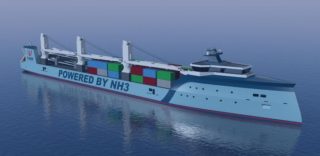-
Ammonia – an emerging marine fuel?
Date posted:
-
-
-
Post Author
Philip SharmanIFRF Director
-

-
Following on from the blogpost on alternative energy vectors last month, you might be interested to hear about some interesting developments in the marine shipping industry…
Firstly, by way of context, while shipping accounts for only about 2.2% of global carbon emissions at present, it has been a cause of particular concern for two main reasons: The increased need for transport under a globalising world economy could see this figure rise to 17% by 2050 if left unregulated, according to a study conducted for the European Parliament’s ENVI Committee in November 2015 by Öko-Institut; and because many ships use dirty, carbon-rich fuels such as heavy diesel, which could be banned in many countries for offshore transport. These pressures led in April 2018 to the member countries of the International Maritime Organization (IMO) announcing an “initial strategy” for cutting the shipping sector’s greenhouse gas emissions by 50% by 2050. Environmental campaigners responded saying that emission cuts of at least 70% from shipping by 2050, compared with the 2008 baseline chosen by the IMO, would be needed to meet the aims of the Paris agreement on climate change (under which countries have agreed that temperature rises should be limited to no more than 2°C above pre-industrial levels). If the worst consequences of climate change are to be avoided, major industries like international shipping will certainly need to do more than cut their emissions by 50% — but, that said, the IMO’s mid-century target was nevertheless hailed for its ambition by the International Energy Agency, amongst others.
Just eight months later, Maersk — the world’s largest container shipping company — announced that it would reduce its greenhouse gas emissions to zero by 2050. This bold commitment means that the company would have to abandon fossil fuels – “The only possible way to achieve the so-much-needed decarbonisation in our industry is by fully transforming to new carbon-neutral fuels and supply chains,” stated Søren Toft, COO at AP Møller – Maersk A/S.
So, what prompted Maersk to announce a corporate emissions reduction goal that is at least twice as ambitious as the IMO’s target of less than a year earlier? After all, large corporates like Maersk seldom commit themselves publicly to goals that they think are unobtainable…
Maersk clearly sees a pathway to zero emissions that involves a number of strategies working synergistically together, from simple changes such as optimising sea routes and reducing speeds, to more advanced technological options such as wind-assist systems (i.e. sails) or air cavitation (micro-bubbles along the hull of the ship). But as Maersk’s Søren Toft indicates, carbon-neutral fuels hold the key.

Hydrogen and, increasingly, ammonia are gaining industry attention as holding significant promise for emissions-free shipping technology. A number of recent reports on reducing the shipping sector’s CO2 emissions (e.g., from Lloyd’s Register and UMAS, the International Transport Forum, and the International Chamber of Shipping) have identified fuel-switching from heavy fuel oil to ammonia as one of the most exciting options for limiting the sector’s contribution to climate change. In addition, from an operational perspective, MAN Energy Solutions – the major OEM of marine propulsion systems – is developing ammonia-fuelled heavy-duty marine engines, while nautical design company C-Job is engineering “sustainable and future-proof” ammonia-powered vessels.
In January 2019, the UK Department for Transport published a policy paper outlining its vision for the maritime sector over the coming decades. Among the many recommendations contained in ‘Maritime 2050: navigating the future’, is an objective to place “a group of hydrogen or ammonia powered domestic vessels in operation” within 5-15 years. Driving this recommendation is the expectation that “the UK will … lead the way in taking action on clean maritime growth enjoying economic benefits from being an early adopter or fast mover.” Moving forward, these recommendations will be developed into policy in the government’s forthcoming ‘Clean Maritime Plan’, scheduled to be published in Spring 2019.
The future for ammonia as an energy vector in the shipping industry looks bright – and it might be a swift revolution!
